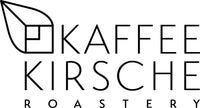Why does my coffee taste sour or bitter? Tips for the perfect taste

Have you ever wondered why your coffee doesn't taste the same as it does in a café? Sometimes it's unexpectedly sour or bitter. These flavor nuances are often caused by incorrect brewing settings. However, with a little knowledge and the right adjustments, you can easily brew the best coffee at home.
Why does coffee taste sour?
A fruity, subtle acidity in light-roasted beans is often perceived as pleasant and is part of the desired flavor profile. Citrus or berry aromas are emphasized by this acidity. Unpleasant acidity, on the other hand, is a sign of under-extraction, which often occurs due to coffee grounds that are too coarse, water temperatures that are too low, or a brewing time that is too short.
Tip against unpleasant acidity:
-
- Set the grind finer
- Extend the brewing time for filter methods by pouring slowly and evenly to better balance the acidity
- Maintain a water temperature between 92°C and 96°C
- Freshly ground coffee has better aromas and a more stable extraction
Why does coffee taste bitter?
Bitter coffee usually results from over-extraction, where the water dissolves too many unwanted bitter compounds. This happens when the grind is too fine, the brewing time is too long, or the water is too hot. This is especially common with French press or espresso.
Tips for bitter coffee:
-
- Use a coarser grind
- Shorten the brewing time
- Let the freshly boiled water cool to about 96°C to avoid bitterness
- Keep your coffee makers clean: Coffee residues such as bean oils and fats settle on appliances and overwhelm the aromas, resulting in a bitter taste
- Pay attention to the right beans: Robusta and dark coffee roasts usually have a more bitter taste
The brew ratio
The brew ratio is crucial for the ideal taste of your coffee. It describes the ratio between the amount of coffee and water and varies depending on the preparation method. Generally speaking, the brew ratio for espresso is 1:2 to 1:3, and for filter coffee, it's 1:15 or 1:16. A brew ratio of 1:15 means 1 part coffee to 15 parts water. These rules of thumb are a good starting point when trying new beans—you can then experiment and adjust the ratio to refine the flavor.
-
- Filter coffee: Maintain a ratio of 1:16 (e.g. 15g coffee to 250ml water)
- Espresso: A ratio of around 1:2 is suggested (e.g. 19g coffee for 38ml espresso)
In addition to the brew ratio, other factors such as grind size, water temperature, water quality, bean quality, and extraction time play a crucial role. A scale is essential for precise preparation. It allows for precise control of the amount of coffee and water, ensuring consistent quality and preventing under- or over-extraction. It's especially helpful for experimenting with brewing to optimize the brewing process.
Avoid hard tap water, use fresh beans, and adjust the grind, brewing time, and temperature to your liking—this will ensure your coffee is just the way you like it. Enjoy!
____________________________
Still not satisfied? Then try one of our coffee courses ! Learn everything about perfect preparation, from grind size to water temperature, and take your coffee to the next level. Sign up today and discover how to brew the best coffee at home!
